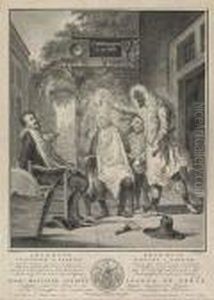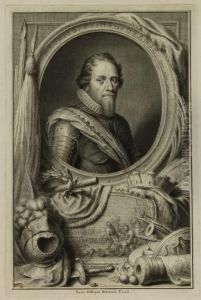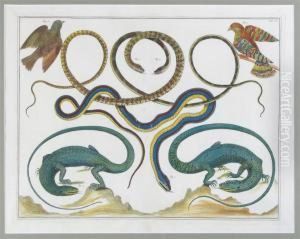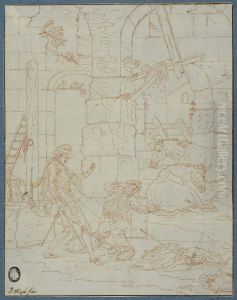Pieter Tanje Paintings
Pieter Tanje was a notable Dutch engraver born in 1706 in Sneek, a city in the northern Netherlands. Tanje's contributions to the world of art, particularly in the 18th century, positioned him as an important figure in the Dutch Golden Age of engraving, a period that saw the Netherlands become a hub for printmaking and art.
Tanje's journey into the arts began early, and he quickly developed a keen interest in engraving. This interest led him to Paris, where he furthered his studies and honed his skills under the tutelage of notable engravers of the time. His time in Paris was pivotal, as it exposed him to the broader European art scene and the intricacies of the French engraving style, which he would later blend with his Dutch sensibilities.
After his period in France, Tanje returned to the Netherlands, where he embarked on a prolific career. He became renowned for his masterful engravings that captured both the complexity and elegance of the subjects he chose. His work covered a broad spectrum, including portraits, historical scenes, and illustrations for books. One of his significant contributions was his involvement in the illustration of books, which played a crucial role in the dissemination of knowledge and ideas during his time.
Tanje's engravings were celebrated for their precision and attention to detail, characteristics that made his works sought after by collectors and art enthusiasts. His ability to convey emotion and narrative through his engravings set him apart from his contemporaries and marked him as a master of his craft.
Despite his success, detailed records of Tanje's life remain scarce, and much about his personal life and thoughts remains unknown. However, his legacy lives on through his engravings, which continue to be studied and appreciated for their artistic merit and historical significance. Pieter Tanje passed away in 1761, leaving behind a body of work that continues to resonate with art lovers and historians alike.



